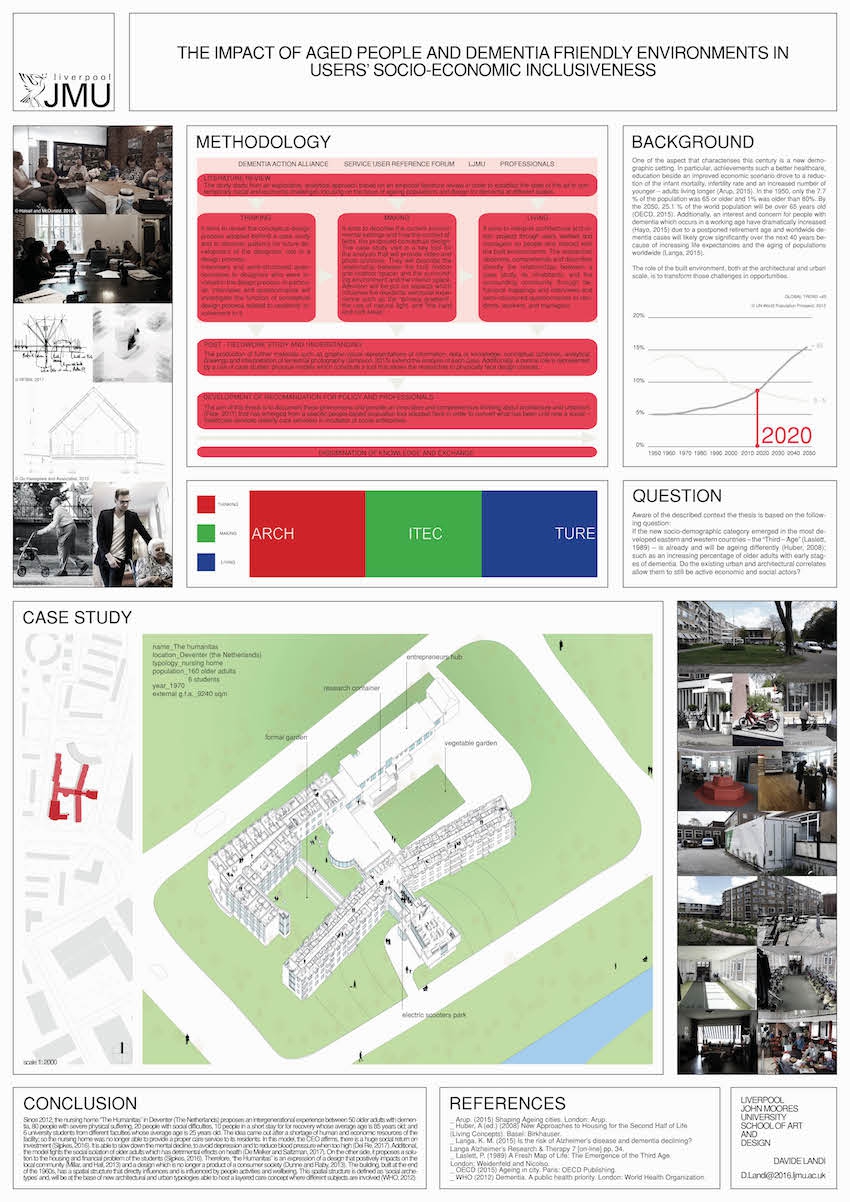Senior care / Healthy Cities
European Healthcare Design 2017
The impact of aged people and dementia-friendly environments in users’ socio-economic inclusiveness
By Davide Landi | 22 Jun 2017 | 0
The United Nations (UN) reports that the global population is ageing rapidly with 11 per cent of the world’s population currently over 60 years old – a figure projected to double by 2050.
Abstract
A number of studies highlights the importance of the relationship between people and spaces, and how environments can positively affect the wellbeing of people as they age in place (Kerr, Rosemberg and Frank, 2012).
This study investigates the impact of this approach on older adults in the early stages of dementia, with a specific focus on examining whether existing urban and architectural factors enable them to be active in their communities and cities. Moreover, it will also preserve cities’ diversity and their capability of providing something for everybody (Jacobs, 1961).
The first stage of this study is a literature review, with the second stage characterised by a post-occupancy evaluation (POE). The development and creation of a POE tool is influenced by a specific participatory design approach: a living lab. This approach has been robustly developed through the work of a European-funded project, which supported the partnership working activities of the following: Liverpool John Moores University; Mersey Care NHS Foundation
Trust; HLP, an international architectural practice; Liverpool Service User Reference Forum – Dementia; and the Liverpool Dementia Action Alliance – Liverpool.
As the study progresses these partners will be actively involved in the methodological and data collection phases of the study. In addition, a number of case studies will be analysed through a one-time POE (Cutler and Rosalie, 2009). This analysis phase will be characterised by three parts: the thinking, the making, and the living of architectures or urbanisms. The aim of the analysis phase is to critically evaluate identified design strategies while teasing out their uniqueness, in order to create an innovative architectural theory that links to the overall aim of the study.
Organisations involved

